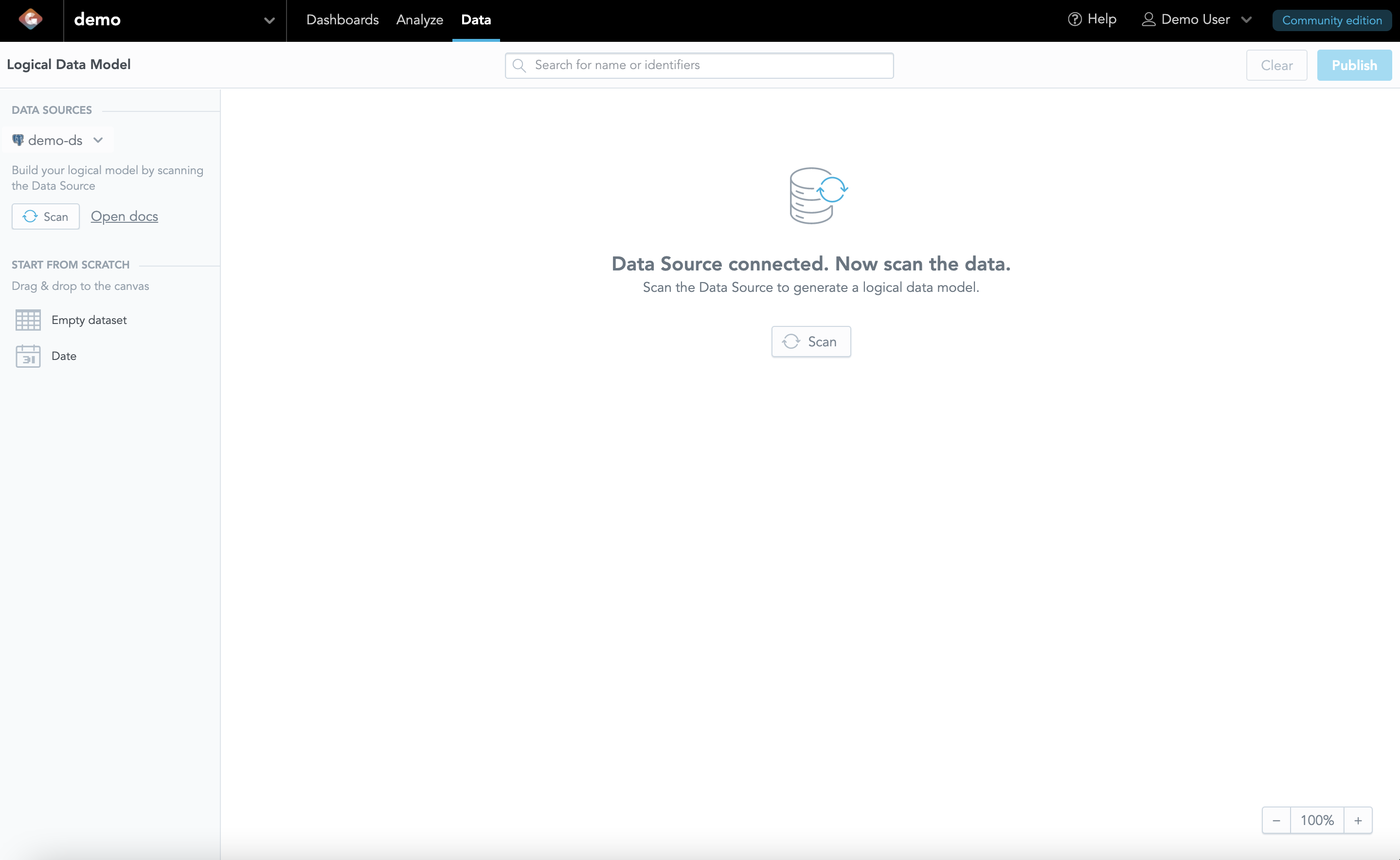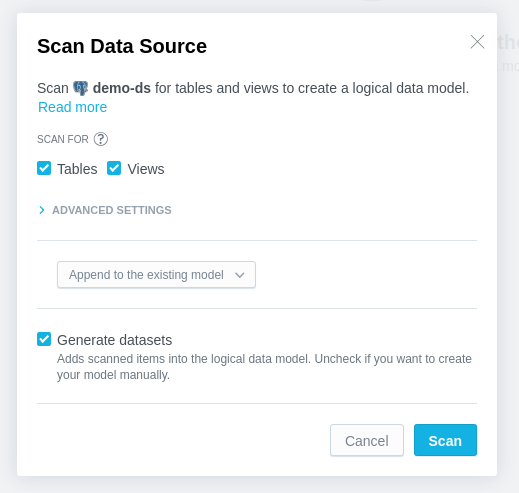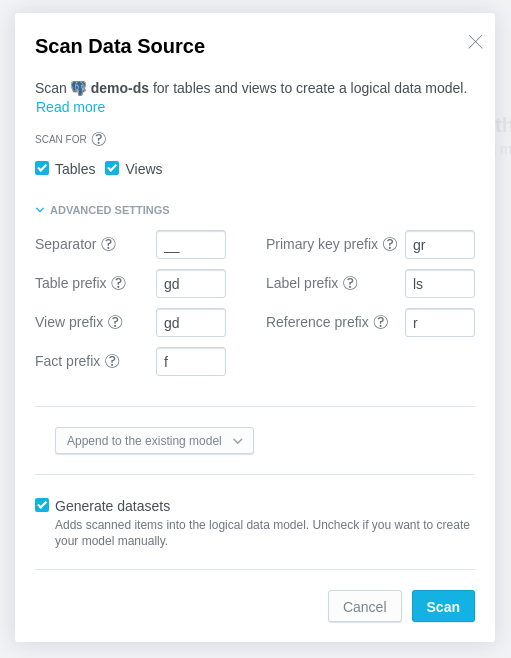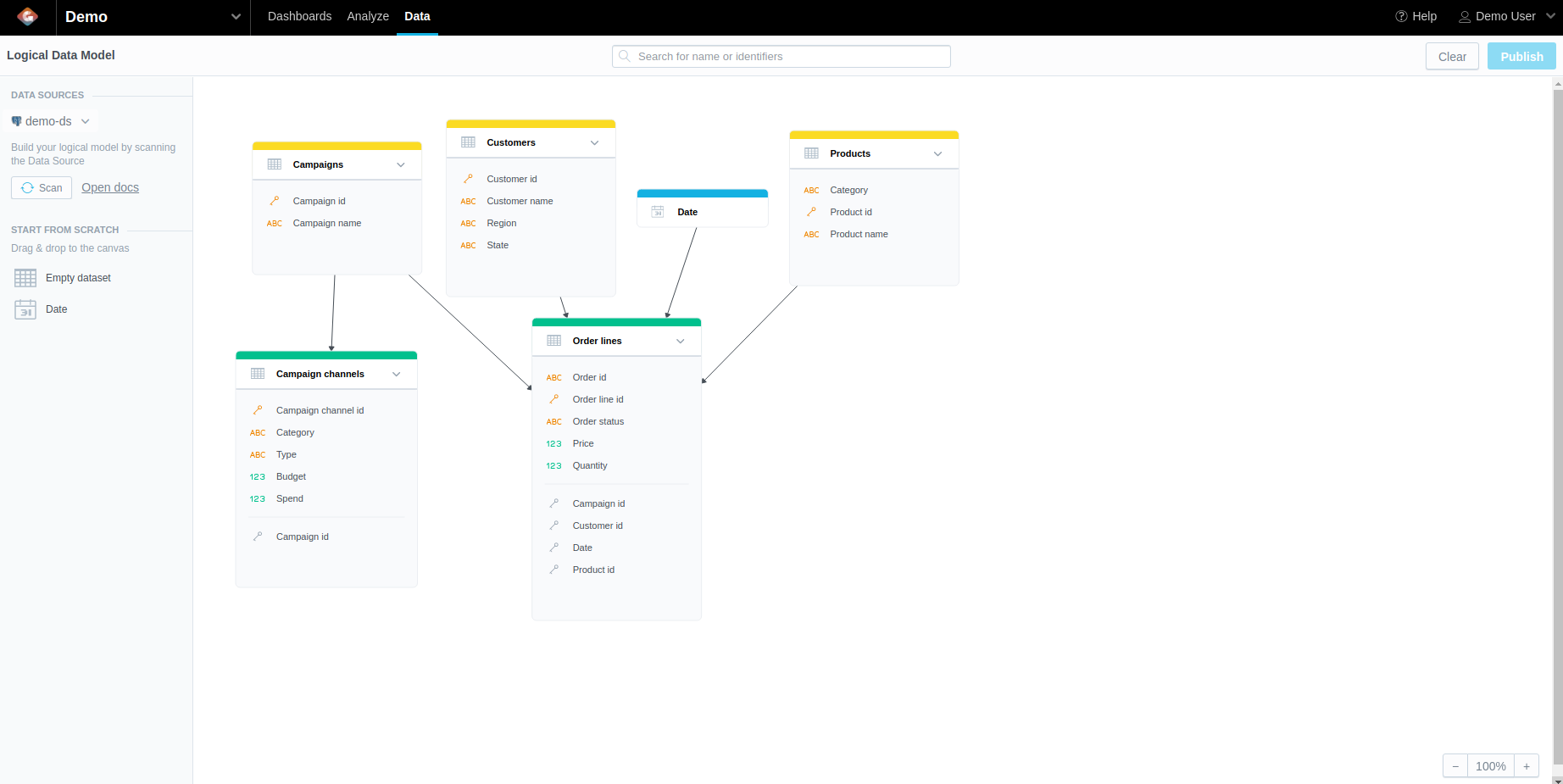Generate a Logical Data Model Automatically in the LDM Modeler
Once you have generated the physical data model (PDM) either using the API or in the LDM Modeler, generate the logical data model (LDM) based on the PDM automatically in the LDM Modeler.
If you cannot or do not want to use the LDM Modeler, you can use the API.
Generating the LDM automatically is suitable for quick onboarding and exploring the content of your database or if your database is prepared for building analytics and does not contain the complex analytical scenarios. If this is not the case, create the LDM manually in the LDM Modeler.
To generate the LDM automatically in the LDM Modeler, do the following:
Learn how the PDM Is Transformed to the LDM
Review this section and adjust your database as needed to make the process of generating the LDM smoother and more accurate.
Generate the LDM
Steps:
Open your workspace.
Click the Data tab.
The LDM Modeler opens in view mode.
Click Edit.
The LDM Modeler is switched to edit mode. You can see the registered data sources in the left panel.
 If you do not have any data source, you cannot generate the LDM. Create a data source first.
If you do not have any data source, you cannot generate the LDM. Create a data source first.Click Scan next to the data source that corresponds to your database.
The scan dialog opens. By default, only tables are selected for scanning.
If you want to also scan the views, select the Views check box under the Scan for section.

Expand the Advanced Settings section, and narrow down the scope of the database objects to scan:
- If you want to limit the number of tables/views to scan in the database, enter the table/view prefixes. This way, only the tables/views with names containing the prefixes will be scanned. For example, to scan only the tables and views whose names start with
gd__, entergd__in Table prefix and View prefix. - Specify other parameters as needed.

- If you want to limit the number of tables/views to scan in the database, enter the table/view prefixes. This way, only the tables/views with names containing the prefixes will be scanned. For example, to scan only the tables and views whose names start with
Choose the scan mode.
Choose the mode carefully. If you have made breaking changes in your database (for example, dropped a table mapped to the existing LDM), the related measures or insights will stop working. If an insight cannot be displayed, a generic error message is displayed. A user-friendly error message is available via the browser’s developer console. If a mapped table or column does not exist, an error message contains information sufficient for troubleshooting.Append to the existing model appends new objects and does not touch the existing objects.
Use this option if you want to add new objects to the existing PDM (and eventually LDM) or if you want to scan for newly created tables and views in your database without affecting the existing PDM and LDM.
Update the existing model appends new objects and replaces the existing ones.
Replace the existing model replaces the current PDM with the newly scanned PDM and regenerates the LDM. If the current PDM contains tables/views that are no longer in the database, these tables/views are deleted, and the datasets mapped to these tables/views are deleted as well.
Keep the Generate datasets checkbox selected.
Click Scan.
The scanning process starts. When the scanning completes, the LDM is created.

Once you have the LDM published, you can start building insights and dashboards.